Superior Tours Vallarta is a Tour Transportation Company and Travel Agency located in Puerto Vallarta Mexico. They can pick you up at the Puerto Vallarta Airport and deliver you to your hotel or resort, Take you from the Cruise Ship for a Specialized Tour, Take you to Guadalajara, the town of Tequila, Sayulita, Mayto, anywhere in Mexico. An Interview with owner Astrid Van Dam of Superior Tours, Vallarta
Also, Who was the first Emperor of Mexico? Who was Agustin Iturbide?

Listen to The Podcast
Hello fellow travelers, welcome this episode of the Puerto Vallarta Travel show. I am your host Barry Kessler and I am just so happy to be introducing you to my favorite vacation destination, and maybe even yours, Puerto Vallarta Mexico.
That music you were just listening to is performed by Alberto Perez, the owner of the La Palapa Group of Restaurants. Those
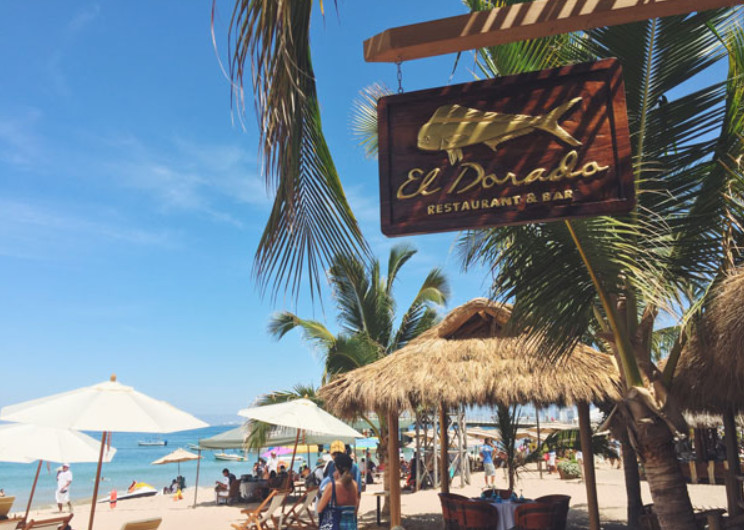
are La Palapa, Puerto Vallarta’s Oldest Restaurant on the famous Los Muertos Beach, and The El Dorado Restaurant and Beach Club right next door so you can enjoy that fantastic view of the Los Muertos Pier all lit up at night in beautiful colors, or during the day in its grand splendor for breakfast, lunch or dinner, seated with our toes in the sand right at the water’s edge. It’s so romantic, it’s so, Puerto Vallarta my friends.
Subscribe On iTunes & Leave a Good Review
Subscribe On Android Devices
Send Barry an Email
This week I have a wonderful guest for you and you are going to really love her, she is Astrid Van Dam, and she owns and
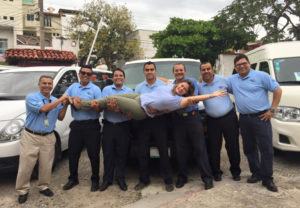
operates a tour transportation company called Superior Tours Vallarta, but before we get to Astrid, let’s see what’s happening this week in Puerto Vallarta the 13th of September, 2018.
Independence Day Celebrations are coming up this week in Puerto Vallarta, lets find out what’s planned…
Today the 13th in Pitillal Square at 9:00 AM there was a celebration of the Ninos Heroes, the defenders of the castle of Chapultepec, oh man, one day I’m going to tell you about my visit to Chapultepec when I was going to school in Mexico City, oh man, what a story. Sometime soon, anyway, we missed this particular celebration this morning so let’s move on shall we? That’s it for today okay? So tomorrow the 14th The National Charro Day Parade, you don’t want to miss those dashing horsemen and elegant horsewomen on their beautiful horses. That will start at Lazaro Cardenas Park, head down Morelos, to the Malecon and on northward. That starts at 11 in the morning tomorrow the 14th.
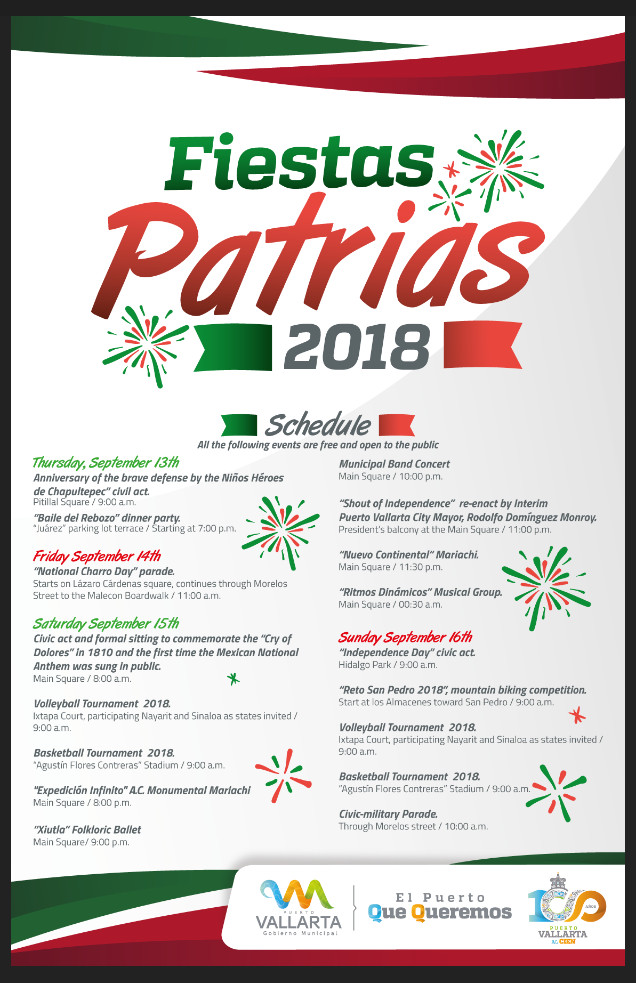
Then things really start heating up Saturday with the Civic Act and Formal sitting to Commemorate the “Cry of Dolores” in 1810, and the first time the Mexican National Anthem was sung. That takes place at 8 in the morning in the Main Square next to City Hall. So get up early for that.
There will be Volleyball and Basketball tournaments around the town, then at 8 in the evening the Mariachis break out in the main square followed by Folkloric Ballet at 9. Then they will be followed by the Municipal Band putting on a concert till 11, when the interim Mayor of Puerto Vallarta will re-enact the Shout of Independence from the President’s Balcony in the Main Square Then at 11:30, more mariachis for an hour, then the musical group Ritmos Dinamicos takes the stage in the main square at 12:30, and they close out the evening’s celebration. Then in the morning of the 16th, Independence day, another Civic Act commemorating the actual day itself. Finally got there didn’t we?
So Civic act. That means they drag out the big guns like city officials, the police band, the local tourist cops, sometimes school kids and make proclamations. That’s what they mean by a Civic Act.
They will have more Volleyball and More Basketball and even Mountain biking tournaments thrown in for good measure all around town, and at 10 in the morning, the military gets into the action with a parade down Morelos. Fun Times to be in Puerto Vallarta.
So what is the day all about? I’s just a review because we talked about it last year, but the Día de la Independencia is a Mexican holiday celebrating the “cry of independence” on September 16, 1810, which started a revolt against the Spaniards.
Independence Day celebrates the day Miguel Hidalgo is believed to have made the cry of independence known in Spanish as El Grito de la Independencia, in the town of Dolores, in the north-central part of the Mexican state of Guanajuato. Hidalgo, a Catholic Priest was one of the nation’s leaders during the War of Independence in Mexico.
There is no scholarly agreement on what was exactly said by Hidalgo, but his speech, also known as the cry of Dolores (el Grito de Dolores), was made on September 16, 1810 to motivate people to revolt against the Spanish regime. Hidalgo’s army fought against the Spanish soldiers in the fight for independence, but he was captured and executed on July 30, 1811. Mexico’s independence was not declared until September 28, 1821.
So those are your times and dates for the events coming up this week, and they are in my show notes for this week’s episode as well so if you are in town, check them out.
Who Was Agustin Iturbide?
In Puerto Vallarta, there’s a tiny street called Iturbide. It goes from the Malecon at the Seahorse Sculpture, past the north side
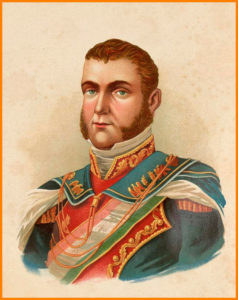
of City Hall, it’s the same street actually a walkway known as the Umbrella Street because it has, you guessed it Umbrellas, colorful ones above it, suspended, same street as La Tostadaria, it becomes a staircase and then a street that goes all the way up the mountain past Miramar to Emilio Caranza. On one of my trips to Vallarta I asked the taxi driver, what is an Iturbide? Not sure he said, maybe a politician. They name all the streets after politicians.
So this week I thought I would tell you a little about the first Emperor of Mexico, Agustine Iturbide.
Remember last week I promised to tell you about the story of the patriotic dish Chiles en Nogada? Well this is just the beginning.
Let’s read from the Wiki Pages…
Chiles en nogada is a dish, traditionally served at room temperature with cold cream sauce, from Mexican cuisine. The name comes from the Spanish word for the nut tree, nogal. It consists of poblano chilis filled with picadillo (a mixture usually containing shredded meat, aromatics, fruits and spices) topped with a walnut-based cream sauce, called nogada, and pomegranate seeds, giving it the three colors of the Mexican flag: green from the chili, white from the nut sauce and red from the pomegranate
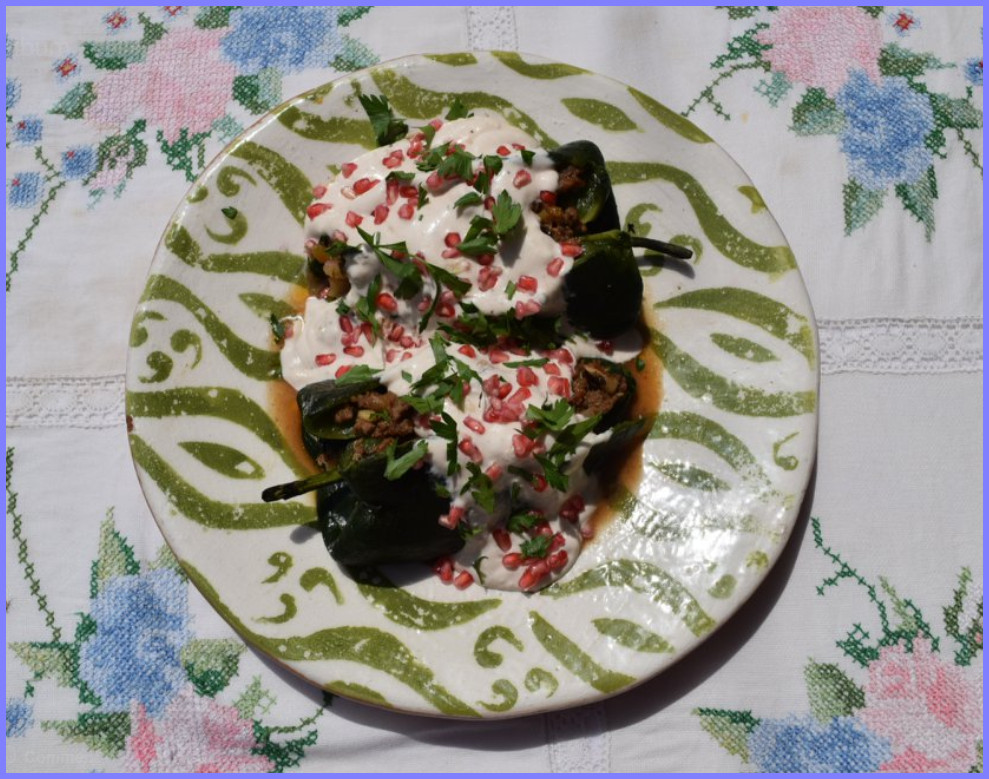
The traditional chile en nogada is from Puebla; it is tied to the independence of this country since it is said they were prepared for the first time to entertain the future emperor Agustín de Iturbide when he came to the city after the signing of the Treaty of Córdoba. This dish is a source of pride for the inhabitants of the state of Puebla.
https://en.wikipedia.org/wiki/Chiles_en_nogada
So, who was Agustine Iturbide?
Agustine Iturbide came from a wealthy family, of Spanish Basque Gentry, born in Morelia in the State of Michoacán on September 27th, 1783.
Iturbide was a fine horseman and, in his teens, entered the army, loyal to Spain, and was commissioned and then promoted to first Lieutenant. He was a horseman without fear which earned him the name of “The Iron Dragon”.
When the war for independence broke out, he was asked by Father Miguel Hidalgo y Costilla to join the insurgents and become a general but he thought the rebels were ill trained and were committing atrocities upon the Spanish civilians, so he chose to fight with the royalists. The Spanish.
And he was good at beating back the insurgent forces. He along with loyalist forces chased the rebels, Morelos included, finally capturing and executing him in 1815.
But he was accused of being cruel and taking advantage by enriching himself.
In his diary he refers to the rebels as “perverse”, “Bandits”, and “sacrilegious”, while in a letter to the Viceroy in 1814, he wrote of how he had 300 rebels, to whom he referred as excommunicates, executed to celebrate Good Friday. Humm.
He was relieved of his duty, but nearly a year later, he was asked to take his job back, and assist in ridding Mexico of the remainder of the insurgence. He took the job, but always remembered how he was forced to lose face when relieved of his duties.
Then something weird happened. He was sent to peruse Guerrero, the remaining rebel insurrectionist in the south, and a couple of things happened.
In Spain, in 1820, there was an event which put the Bourbon Dynasty at risk. There was a revolt which resulted in the establishment of a constitutional Monarchy, limiting the powers of Ferdinand the VII of Spain. This got Iturbide, and others in Mexico thinking that the Bourbons would lose all control in Spain and that would mean near ruin for those with land who depended on favors from whomever was in power. What would that mean to their haciendas and land holdings, so they were concerned. An idea arose, that in the case that if Mexico became independent, or autonomous, and Ferdinand were deposed, he could become king of Mexico.
It seems that both Iturbide and Guerrero were both communicating with each other and had at least some sort of understanding and relationship.
Iturbide was convinced that independence for Mexico was the only way to protect the country from radical liberal tide from Spain. He decided to become the leader of the Criollo independence movement. But in order to do that, he needed to put together a very-unlikely coalition of Mexican liberal insurgents, landed nobility, and the Church. Therefore, he penned The Plan of Iguala, which held itself up on Three Guarantees: Freedom (from Spain), Religion (with Roman Catholicism being the
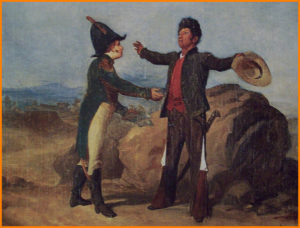
only accepted religion in the new country) and Union (with all inhabitants of México to be regarded as equals). In that manner, he was paving the road to gaining the support of the most powerful factions: the insurgents, the clergy and the Spaniards. In the plan, a monarchy was ensured, thus assuring the support of the royalists as well. Iturbide held a series of negotiations with Guerrero and made a number of demonstrations of his intentions to form an independent Mexico. Iturbide offered Guerrero a full pardon if he surrendered. Guerrero rejected the pardon but agreed to meet with Iturbide to discuss the independence of Mexico. That meeting is now referred to as the “Embrace of Acatempán,” after the locale in which they agreed to implement the plan. Iturbide, Guerrero, and another insurgent leader, Guadalupe Victoria, announced the plan on 24 February 1821. On 1 March 1821, Iturbide was proclaimed head of the Army of the Three Guarantees, with Guerrero fully supporting him and recognizing him as his leader.
The plan was a rather vague document that sought the transition of the center of power in New Spain from Madrid to Mexico City. Essentially, the idea was to bring Ferdinand VII to Mexico City to rule. If he did not come to Mexico, another member of the Bourbon royal family would be chosen to rule there. If no European ruler would come to rule México, the nation would have the right to elect a ruler by its own people. To attract the all the parties involved in the scheme, the plan offered three guarantees: Mexico would be independent from Madrid, Roman Catholicism would be the official religion, and all inhabitants of the new nation, later México, would be considered equals, with no distinction being made between Spaniards, Creoles, Mestizos, etc., thus eliminating the complicated caste system that had been used until then and abolishing the use of slaves in the territory of the new nation as well.
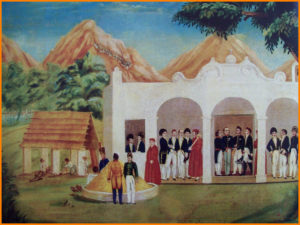
Both the sitting viceroy and Fernando VII rejected the Plan of Iguala.The Spanish parliament sent a new “viceroy,” Juan O’Donojú, to Mexico. (Technically, the office of viceroy had been replaced by a “superior political chief” under the 1812 Spanish Constitution.) O’Donojú, however, arrived to witness a nation on the brink of achieving independence and knew that its consummation could not be stopped.
Iturbide met with O’Donoju and hastily negotiated a treaty, called the Treaty of Córdoba. Similar to the Plan de Iguala, the document tried to guarantee an independent monarchy for New Spain under the Bourbon dynasty. The successor state would invite Ferdinand VII to rule as emperor or, in default, his brother Don Carlos. If both refused, a suitable monarch would be searched for among the various European royal houses. In the meantime, a regency would replace the viceroy. All existing laws, including the 1812 Constitution, would remain in force until a new constitution for Mexico was written. A key element was added at O’Donojú’s suggestion: if Spain refused its right to appoint a regent for the Mexican Empire, the Mexican congress would have freedom to elect whoever it deemed worthy as emperor. That crucial clause was not in Iturbide’s Plan de Iguala, a point against the argument that Iturbide entertained the notion of becoming the ruler when he started his campaign for Mexico’s independence.
To show the military might of the alliance, Iturbide coordinated with associated royalist and insurgent commanders in the provinces, opting for a replay of the strategy of closing in on Mexico City from the periphery, which Morelos had attempted in
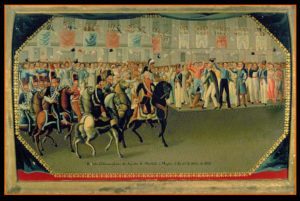
1811–14. However, Iturbide had the advantage of having most of the former royalist army on his side. Iturbide marched into Mexico City on 27 September 1821, his own birthday, with the Army of the Three Guarantees. The army was received by a jubilant populace who had erected arches of triumph and decorated houses and themselves with the tricolor (red, white, and green) of the army. Cries of “¡Viva Iturbide I!” were heard first on that day. The next day, Mexico was declared an independent empire. In much less than a year, Iturbide had bloodlessly achieved what eleven years of bloody war could not.
Later, when the throne of Mexico was not taken up by one of those royals from Europe, Iturbide was eventually coronated, Emperor of Mexico.
Now that didn’t sit well with many, including his congress. Mexico was going to be squeezed by it’s trading partners because none would deal with the regime for fear of reprisals from the Bourbon Royal Families.
Then the old enemies started to team up on Iturbide, Several prominent politicians and military leaders, many of whom had supported Agustín as emperor, turned against him for having “made a mockery of national representation.” Among those were prominent Insurgent leaders Vicente Guerrero, Nicolás Bravo and Guadalupe Victoria. Opposition groups began to band together him. Leaders such as Valentín Gómez Farías and Antonio López de Santa Anna began to conspire against the imperial concept altogether and became convinced that a republican model was needed to combat despotism.
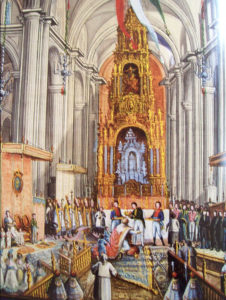
In the end, Iturbide was banished, exiled.
On 11 May 1823, the ex-emperor boarded the British ship Rawlins en route to Livorno, Italy (then part of the Grand Duchy of Tuscany accompanied by his wife, children, and some servants. In exile, Iturbide was approached by a Catholic coalition of nations that sought to enlist his help in a campaign to reconquer México for Spain. Iturbide declined. Spain pressured Tuscany to expel Iturbide, and the Iturbide family moved to England.
There, he published his autobiography. When he was exiled, Iturbide was declared him a traitor and “outside of the law” to be killed if he ever returned to Mexico. Iturbide was unaware of the penalty.
After his departure, the situation in Mexico continued to worsen. Reports of a probable further Spanish attempt to retake Mexico reached Iturbide in England. He wrote in his memoirs that he was very worried
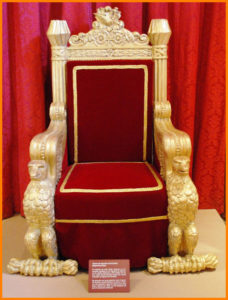
about the future of the nation that he had liberated. He continued to receive reports from Mexico and advice from supporters that if he returned he would be hailed as a liberator and a potential leader against the Spanish invasion. Iturbide sent word to congress in Mexico City on 13 February 1824 offering his services in the event of Spanish attack. Congress never replied.
Conservative political factions in Mexico finally convinced Iturbide to return.
Iturbide returned to Mexico on 14 July 1824, accompanied by his wife, two children, and a chaplain. He landed at the port of Soto la Marina on the coast of Nuevo Santander (the modern-day state of Tamaulipas). They were initially greeted enthusiastically, but soon, they were arrested by General Felipe de la Garza, the local military commander. The local legislature held a trial and sentenced Iturbide to death. When a local priest administered last rites, Iturbide said, “Mexicans! In the very act of my death, I recommend to you the love to the fatherland, and the observance to our religion, for it shall lead you to glory. I die having come here to help you, and I die merrily, for I die amongst you. I die with honor, not as a traitor; I do not leave this stain on my children and my legacy. I am not a traitor, no.”
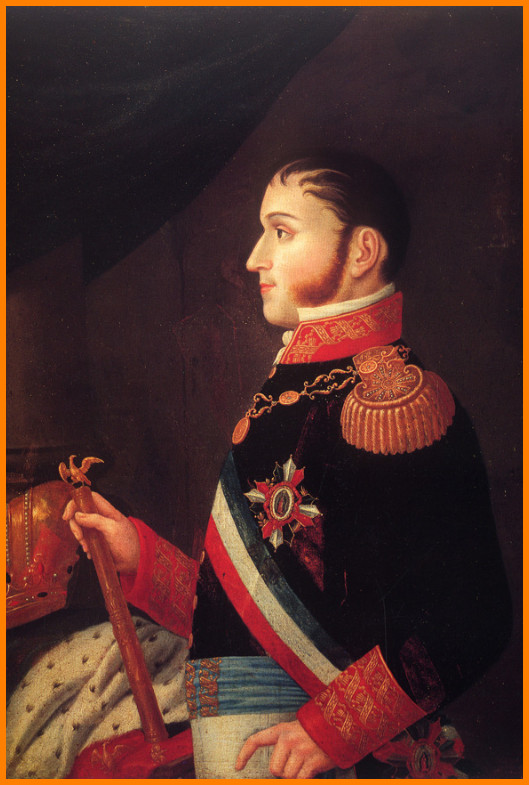
He was executed by firing squad on 19 July 1824. Three bullets hit him, one of which delivered the fatal blow.
So that my friends, is the long and the short of it. The story of chiles en nogada. I mean, the story of Agustin Iturbide, the first Emperor of Mexico.
Oh my gosh, let’s get to the interviews.
Superior Tours Vallarta
Every once in a while, I get an email or a call from a listener or a friend who is coming to Vallarta for a day on a cruise ship and

want to know what to do. Other times I get emails from people who want to take a day-trip and want to get out of town and they are looking for transportation. They ask me Barry, should I rent a car? I tell them no and I get them in touch with Astrid. JR introduced me to Astrid on my first trip with microphones, and I actually interviewed Astrid very briefly in the show I did at Plaza Romey. I knew that I needed to get back and see her so we could take a deeper dive into the services she provides, which are many as you will find. Now I want to give you a head’s up here, her office is , well it has shared space with I think a Real Estate Office, and the person’s desk was right behind Astrid, so I have done my best to minimize the voices in the background, so just a warning to you. So let’s go to Plaza Romy on Lazaro Cardenas and meet someone you need to know when you visit Vallarta, Astrid Van Dam, of Superior Tours Vallarta.

Listen to The Podcast
She was great. Wow, some of the trips and tours are so reasonable. That 3-day package to shop in Guadalajara, what a bargain, and how about sleeping in a tequila barrel. I wonder if you wake up with a buzz?
Places Astrid Likes to Eat
Breakfast
Lunch
- Restaurante Dianita Puerto Vallarta
- Barracuda Restaurant and Bar Puerto Vallarta “For the Best Mocajete”
- La Traviatta, Puerto Vallarta “Italian Great Views”
Dinner
- Hacienda Alemana, Puerto Vallarta “Great comfort European food”
- Bravos Restaurant, Puerto Vallarta
- Barcelona Tapas, Puerto Vallarta
Advice For First Time Visitors to Puerto Vallarta
- Explore.
- Take your tours early so you can return to your favorite places.
Contact Information For Superior Tours Vallarta
- Website: Superior Tours Vallarta
- Facebook Page: @superior.tours.vallarta
Superior Tours Vallarta ® is located in Calle Jazmin 158, Colonia Villa Las Flores, Puerto Vallarta, at 2 minutes from the airport.
Opening hours Sales:
Monday – Friday 9:00am – 5:00pm
Saturday 9:00am – 2:00pm
Opening hours Operations and Reservations:
Monday to Sunday, 09.00am – 6.00pm
For all questions and reservations of tours, flights, and bus tickets please contact our agency:
Call us from the US or Canada:
011 52 322 222 0024
In Vallarta:
222-0024
Within Mexico:
01 322 222 0024
For (airport) transportation :
Call us from the US or Canada:
011 52 322 293 7226
In Vallarta:
293-7226
Within Mexico:
01 322 293-7226

And how about that deal with a van picking you up at the cruise ship? Just get a couple of people together and what a deal. And customized to boot! Brilliant!
I have all of her contact information in the show notes as well as pictures and links to the website where you can look over all the great tours she has to offer. Let her know that JR sent you.
I think that should do it for this episode of The Puerto Vallarta Travel Show,
Next week, stay tuned for more on the ground reports from Puerto Vallarta Mexico, with travel tips, great restaurant and excursion ideas and more. Until then, remember, this is an interactive show where I depend on your questions and suggestions about all things Puerto Vallarta. If you think of something I should be talking about, please reach out to me by clicking on the Contact us tab and sending us your message.
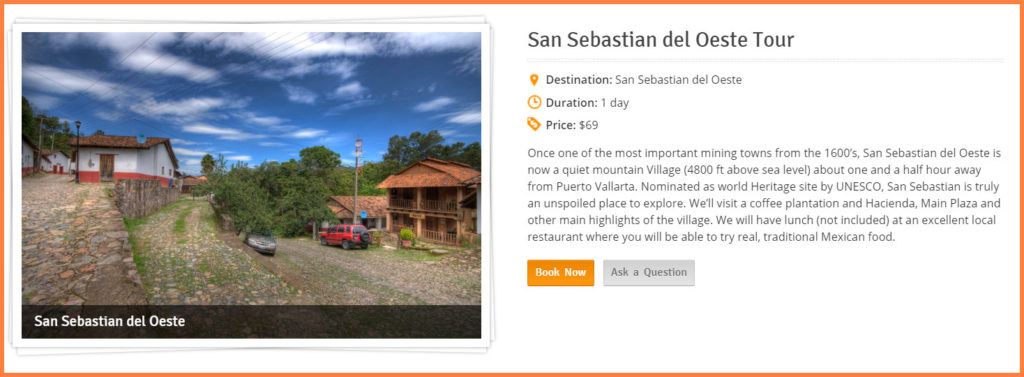
And remember, if you are considering booking any type of tour while you are in Puerto Vallarta, you must go to Vallartainfo.com, JR’s website and reserve your tour through him, right from his website. Remember the value for value

proposition. His experience and on the ground knowledge of everything Puerto Vallarta in exchange for your making a purchase of a tour that you would do anyway, you’re just doing it through him as a way of saying thank you. It costs no more

than if you were to use someone else so do it. Really. And when you do take one of these tours, email me about your experiences. Maybe you can come on-board and share with others what you liked or didn’t like about the tour. Again, contact me by clicking on the Contact us tab and sending off a message. Don’t forget his maps, his DIY tours and his revitalized Happy Hour Board. I have links to all of those in the show notes.
And once again, if you like this podcast, please take the time and subscribe and give me a good review on iTunes if you would. That way we can get the word out to more and more people about the magic of this place. Puerto Vallarta, Mexico. Remember I made it easy for you to do just that with each episode I create. But if you haven’t been to my website, you really need to have a look there. I have the links to the places we talk about, interesting pictures and the more all right there in my blog-posts and show-notes for each episode of the show so check them out for sure if you haven’t already all-right? All right.
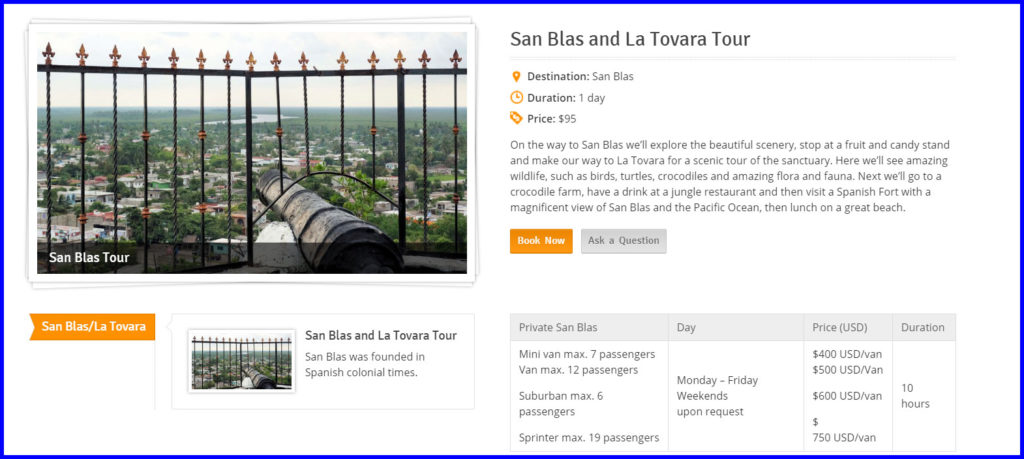
And thank you Astrid Van Dam of Superior Tours Vallarta, make sure you contact her before you make any transportation or tour plans involving transportation while making your Puerto Vallarta Vacation Plans. You won’t be disappointed. I promise.
And thanks to all of you for listening all the way through this episode of the Puerto Vallarta Travel Show. This is Barry Kessler signing off with a wish for you all to slow down, be kind and live the Vallarta lifestyle. Nos Vemos amigos!
